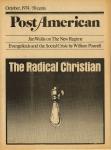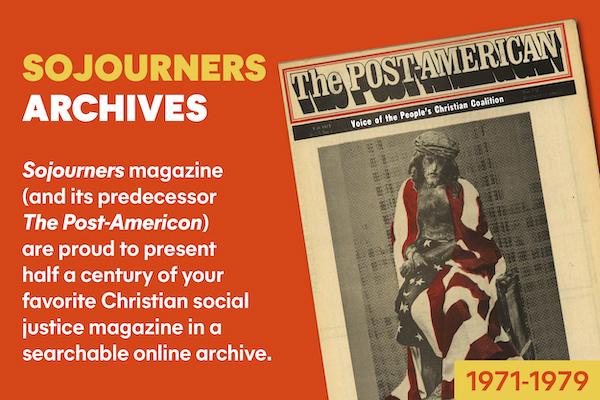Pre-Civil War
It is difficult to know where to start the story of Oberlin. Its prehistory is as important as its history. One place to begin is with Theodore Weld, converted under Finney’s ministry. Weld worked for a while as Finney’s assistant (and while doing so was apparently responsible for pushing Finney in the direction of a controversial “new measure”—that of allowing women to speak in public services) before turning his full attention to reform, adapting “revival” techniques (“protracted meetings,” and the “call for decision”) to this new work. By the early 1830s Weld was focusing on the slavery issue and, though little known because he shunned publicity, he became one of the most important abolitionists of the era.
About this time there was being founded in
Theodore Weld came to Lane as a part of the first theological class of 40 students. Of this group he was probably the only forthright abolitionist. One student later described the situation: “There was a general consent in the institution that slavery was somehow wrong and to be got rid of.” But there was “not a readiness to pronounce it a sin.” A large part, however, of Weld’s motive in coming to Lane was “to introduce anti-slavery sentiments, and have the whole subject thoroughly discussed.” He succeeded.
Weld worked quietly to convert to abolitionism the student members of the “colonization society” on campus. By the spring of 1834 he had gathered together enough to challenge the remaining members to an 18-day debate on the two positions. At the conclusion the students voted almost unanimously in favor of “immediate abolitionism” and proceeded to organize an “abolition society” whose officers were strategically all Southerners. Believing that “faith without works is dead,” the students attempted to put their faith into practice by forming a “large and efficient organization for elevating the colored people of
But it was the board of trustees, mostly solid
But for the students the issue was one of moral integrity and principle. They raised as well the issue of freedom of speech, declaring “free discussion being a duty is consequently right, and as such is inherent and inalienable.” At least 40 students withdrew from the school in protest. Most of these moved across town and set up an informal “free seminary” at which they instructed themselves in theology and continued their work among the blacks of
Meanwhile, in another part of
1. Providence permitting, we engage as soon as practicable to remove to the Oberlin Colony, in Russia, Lorain County, Ohio, and there to fix our residence, for the express purpose of glorifying God in doing good to men to the extent of our ability.
2. We will hold and manage our estates personally, but pledge as perfect a community of interest as though we held a community of property.
3. We will hold in possession no more property than we believe that we can profitably manage for God, as His faithful stewards.
4. We will, by industry, economy, and Christian self-denial, obtain as much as we can, above our necessary personal or family expenses, and faithfully appropriate the same for the spread of the gospel.
5. That we may have time for the Lord’s service, we will eat only plain and wholesome food, renouncing all bad habits, and especially the smoking and chewing of tobacco, unless it is necessary as a medicine, and deny ourselves all strong and unnecessary drinks, even tea and coffee, as far as practicable, and everything expensive, that is simply calculated to gratify the palate.
6. That we may add to our time and health money for the service of the Lord, we will renounce all the world’s expensive and unwholesome fashions of dress, particularly tight dressing and ornamental attire.
7. And yet more to increase our means of serving Him who bought us with His blood, we will observe plainness and durability in the construction of our houses, furniture, carriages, and all that appertains to us.
8. We will strive continually to show that we, as the body of Christ, are members one of another; and will, while living, provide for the widows, orphans, and families of the sick and needy, as for ourselves.
9. We will take special pains to educate all our children thoroughly, and to train them up, in body, intellect, and heart, for the service of the Lord.
10. We will feel that the interests of the Oberlin Institute are identified with ours, and do what we can to extend its influence to our fallen race.
11. We will make special efforts to sustain the institutions of the gospel at home and among our neighbors.
12. We will strive to maintain deep-toned and elevated personal piety, to ‘provoke each other to love, and good works,’ to live together in all things as brethren, and to glorify God in our bodies and spirits, which are His.
But by 1834 the “Oberlin Institute” was in desperate financial state, and Shipherd was sent East to look for funds and a president for the struggling school. One report indicates that in a preparatory session of prayer and fasting Shipherd received the definite, but inexplicable, impression that he should go East by way of
But Mahan, Morgan, and the “Lane Rebels” would come only on the condition that absolute freedom of speech be guaranteed on all reform issues and that blacks be admitted with whites. Shaken by the events at Lane, Oberlin trustees were reluctant at first, but finally acceded to a compromise of Finney, who agreed to come as theology professor if the trustees would agree to leave all such matters solely in the hands of the faculty. With Mahan, Morgan, and Finney on the faculty the results were never in question. This decision permitted the confluence of the radical abolitionism of the “Lane Rebels” and the more “communitarian” and “lifestyle” oriented radicalism of the Oberlin Colony. The foundations were laid for the emergence of the distinctive “Christian radicalism” of
By the time the new school was announced, Oberlin had become almost the last refuge for radical students. All over the country conservative interests had suppressed anti-slavery societies and purged campuses of abolitionist students and professors. Nearly 300 students poured into Oberlin during its first year and many more the following year—many more than Oberlin could physically accommodate. Immediately, too, the opposition surfaced. One man insisted that “Oberlin had before enemies enough for one Semny. Now they will increase tenfold.” And Shipherd discovered in raising money that “Finneyism, Abolitionism, etc. are excuses of multitudes for not giving funds.” But Shipherd and Oberlin believed that “public Institutions no less than private Christians must do right however contrary to popular sentiment.” On this great principle
(To be continued. This is the first of three essays on the “Christian radicalism” of early
Donald W. Dayton was library director at North Park Seminary, a graduate student in theology at the University of Chicago, and a contributing editor of the Post American when this article appeared.
For further reading:
James H. Fairchild, Oberlin: The Colony and the College 1833-1883 (Oberlin: E. J. Goodrich, 1883).
Stuart C. Henry, “The Lane Rebels: A Twentieth-Century Look,” Journal of Presbyterian History 49 (Spring, 1971), 1-14. Compares and contrasts the “Lane Rebels” with the student movements of the 1960s.
Stuart C. Henry, Unvanquished Puritan: A Portrait of Lyman Beecher (Grand Rapids: Eerdmans, 1973). Chapters 10 and 11 are on the Lane Rebellion.
Benjamin P. Thomas, Theodore Weld: Crusader for Freedom (New Brunswick: Rutgers University Press, 1950). Reprinted in 1973 by Octagon Books of New York.
For the rest of the series, see below:
Recovering a Heritage, Part I:
Recovering a Heritage, Part II: Evangelical Feminism, by Donald W. Dayton and Lucille Sider
Recovering a Heritage, Part III: The Lane Rebellion and the Founding of
Recovering a Heritage, Part IV: The "Christian Radicalism" of
Recovering a Heritage, Part V: The Rescue Case, by Donald W. Dayton. December 1974.
Recovering a Heritage, Part VI:
Recovering a Heritage, Part VII: The Sermons of Luther Lee, by Donald Dayton. February 1975.
Recovering a Heritage, Part VIII: Theodore Weld, Evangelical Reformer, by Donald W. Dayton. March 1975.
Recovering a Heritage, Part IX: The Tappan Brothers: Businessmen and Reform, by Donald Dayton. April 1975.
Recovering a Heritage, Part X, by Donald Dayton. May 1975.

Got something to say about what you're reading? We value your feedback!
